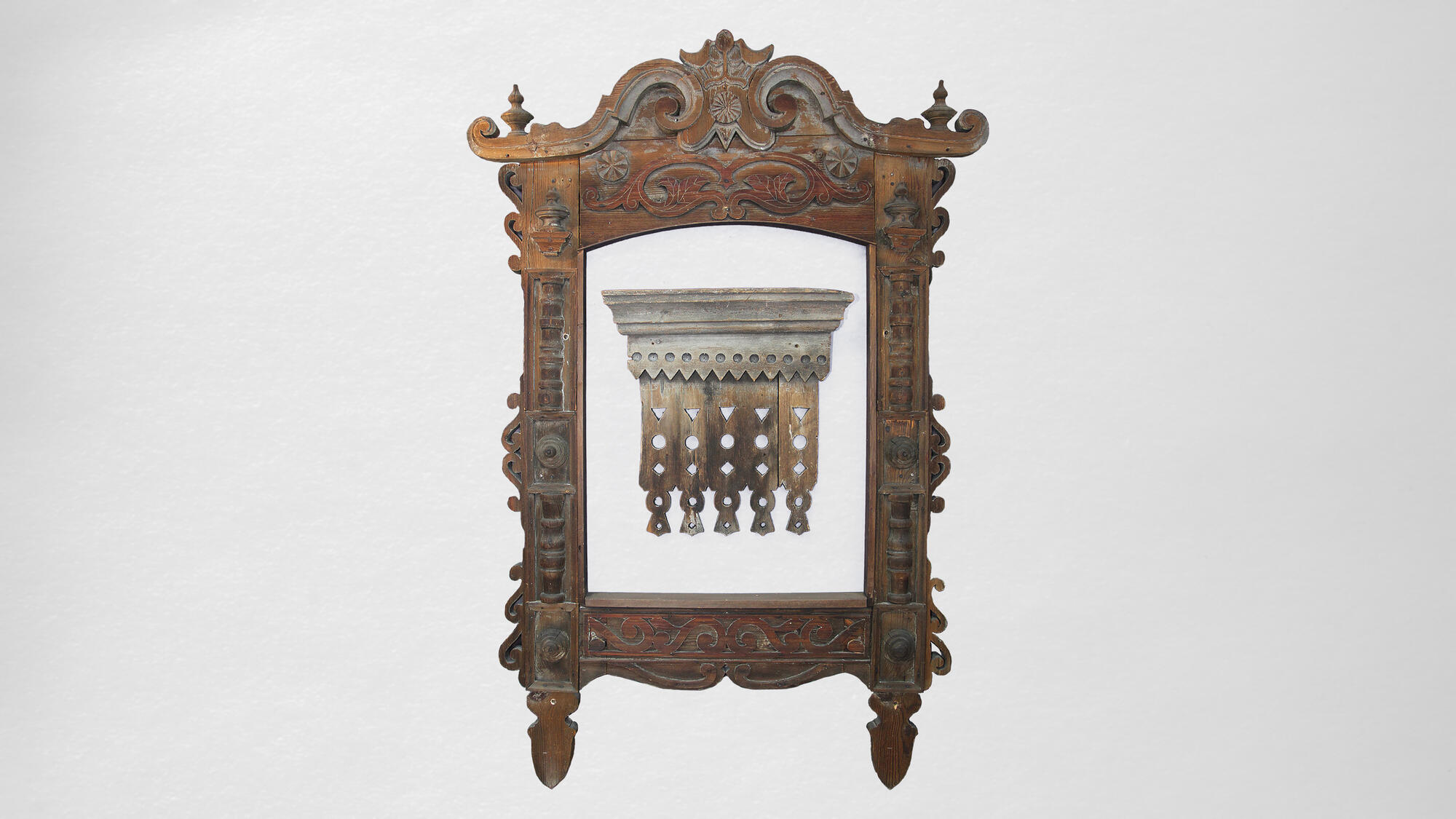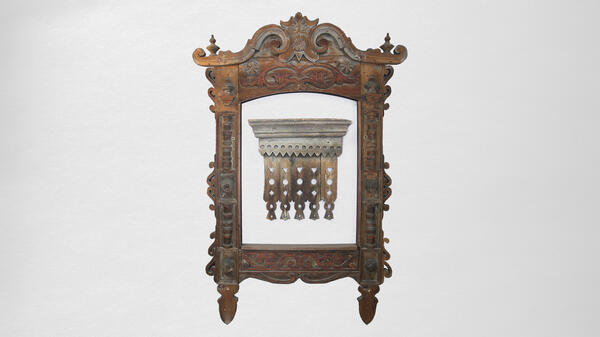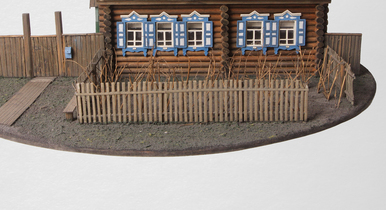Window and door apertures of the buildings in the 19th and 20th centuries were often decorated with applied ornate strips of wood, i.e. casings. Usually, they were made of wood and decorated with carvings. The most popular types of casing in Mariinsk were called Tomsky (from Tomsk), Kuznetsky (from Kuznetsk) and Mariinsky (from Mariiinsk).
The main themes of Tomsk decorations are carved semi-columns, curtains with tassels, plants in vases, and intertwined plant patterns. Wood artists borrowed most of the symbols from the interiors of city houses. They denoted wealth, prosperity, and well-being. All these elements of Tomsk decorations can be found even today on Kuzbass casings that were created in the late 19th century and the first half of the 20th century. The casings in this style can be seen in Yashkinsky, Yurginsky, Kemerovsky, Topkinsky, Leninsk-Kuznetsky, and Yaisky districts.
Kuznetsk casings are distinguished by a special structure of the cornice. It has no acroterion, a central element, and counter-scrolls touch each other. Spiral-looking scrolls with an ‘eye’ in the center, or volutes, resemble a ram’s horn or a sea shell. This element was common for the Baroque style: it symbolized protection against water. That’s why it can be often seen on the streets, which were regularly flooded. By choosing casings with such scrolls, people sought to protect their homes from the water element.
Another feature of Kuznetsk casings is a triangular ledge on the front board, similar to the frame of a wall mirror or photo frame. Such casings were preserved on several houses of the early 20th century in Bukino, Kuzedeyevo, Kurtukovo, and Ilyinka villages of Novokuznetsk district, as well as in Luchshevo village in Prokopyevsk district.
Mariinsk style of casings or ‘Mariinsk Baroque’ casings differ from Tomsk ones. The cornice of the Mariinsk casing has fewer rows, its volute is much bigger as well as the acroterion. The unknown master, who made the window casing, displayed at the museum exhibition, was well acquainted with folk embroidery and local traditions: the patterns decorating the item can also be seen on ancient embroidered towels and on the shirt hems.
There are two birds on the upper part of the casing. They are facing the figure of the Slavic goddess with raised hands. In the middle part a rosette is carved. It is a symbol of the sun. The lower part is made in the form of an inverted flower. This composition is entirely borrowed from traditional Russian embroidery. Some casings with birds have a carved central figure, that was not completed, so visually it resembled a sprout.
The main themes of Tomsk decorations are carved semi-columns, curtains with tassels, plants in vases, and intertwined plant patterns. Wood artists borrowed most of the symbols from the interiors of city houses. They denoted wealth, prosperity, and well-being. All these elements of Tomsk decorations can be found even today on Kuzbass casings that were created in the late 19th century and the first half of the 20th century. The casings in this style can be seen in Yashkinsky, Yurginsky, Kemerovsky, Topkinsky, Leninsk-Kuznetsky, and Yaisky districts.
Kuznetsk casings are distinguished by a special structure of the cornice. It has no acroterion, a central element, and counter-scrolls touch each other. Spiral-looking scrolls with an ‘eye’ in the center, or volutes, resemble a ram’s horn or a sea shell. This element was common for the Baroque style: it symbolized protection against water. That’s why it can be often seen on the streets, which were regularly flooded. By choosing casings with such scrolls, people sought to protect their homes from the water element.
Another feature of Kuznetsk casings is a triangular ledge on the front board, similar to the frame of a wall mirror or photo frame. Such casings were preserved on several houses of the early 20th century in Bukino, Kuzedeyevo, Kurtukovo, and Ilyinka villages of Novokuznetsk district, as well as in Luchshevo village in Prokopyevsk district.
Mariinsk style of casings or ‘Mariinsk Baroque’ casings differ from Tomsk ones. The cornice of the Mariinsk casing has fewer rows, its volute is much bigger as well as the acroterion. The unknown master, who made the window casing, displayed at the museum exhibition, was well acquainted with folk embroidery and local traditions: the patterns decorating the item can also be seen on ancient embroidered towels and on the shirt hems.
There are two birds on the upper part of the casing. They are facing the figure of the Slavic goddess with raised hands. In the middle part a rosette is carved. It is a symbol of the sun. The lower part is made in the form of an inverted flower. This composition is entirely borrowed from traditional Russian embroidery. Some casings with birds have a carved central figure, that was not completed, so visually it resembled a sprout.



